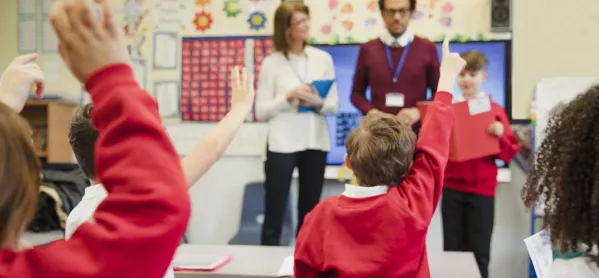- Home
- Teaching & Learning
- General
- Revealed: How learning was hit hard by first lockdown
Revealed: How learning was hit hard by first lockdown

The impact of Covid-19 disruption on disadvantaged pupils’ education is the focus of a major research report, published today.
The Education Endowment Foundation has analysed the performance of primary school pupils before and after the first lockdown of the coronavirus crisis.
The research looked at reading and maths scores both at the start of the new academic year and towards the end of the autumn term.
Covid: Teachers’ grim figures on learning loss
Exclusive: Tests reveal ‘dramatic’ GCSE learning loss
Funding: Schools to get further £300m for catch-up tutoring
Warning: Poorer pupils an extra month behind because of Covid
Here are five key findings from the report.
1. Disadvantaged pupils are an extra month behind in maths
Disadvantaged primary school children have fallen behind their more affluent peers in maths by an extra month as a result of the first Covid lockdown, the study suggests.
The attainment gap between poorer school pupils and their classmates has grown in the subject since schools were first closed owing to the coronavirus.
However, the research did not find an increased gap in reading over the same period.
2. This gap in maths did not close during the autumn term of 2020
The research also found that the gap did not then shrink or grow during the autumn term, despite pupils return to full-time education.
Researchers said that the disadvantage gaps caused by the pandemic are proving challenging to close in primary schools, despite all pupils returning to class in September.
And they said this means it will be unlikely to close without some form of major intervention.
3. The gap in maths was largest in younger year groups
The study looked at pupils’ performance in Years 2 to 6 at primary school.
It found Years 2 and 3 saw the largest estimates for gap widening in maths.
The report adds: “While this matches initial findings from other studies suggesting that younger children have been worse affected by Covid-19 disruptions, we do not have enough data from each year group to draw firm conclusions about whether attainment gaps have grown more for younger children in maths relative to other subject areas or age groups.”
4. Live video lessons might help to close the gap
The research looked at the impact of different approaches to remote learning after pupils returned in September.
It found that there appears to be some evidence that providing videos or live lessons to absent pupils was associated with a narrowing of disadvantage gaps.
The study looked at five variables in primary school practice in the autumn 2020 term.
These included providing videos or live streams for absent pupils or classes, providing extra learning time, reducing the curriculum and holding more small-group interventions.
The report said: “Overall, we found limited evidence of clear associations between these variables and changes in attainment gaps.
“However, there was some tentative evidence that providing video or live lessons to pupils who are absent is associated with reductions in attainment gaps.”
But it said that a larger study may not replicate the same findings.
5. There were big differences in schools’ responses on remote learning
The study also revealed significant differences in the ways that teachers and schools responded to the challenges of remote learning.
In the initial lockdown, 23 per cent of teachers phoned students at least once a week and 40 per cent once or twice during a half-term, while 37 per cent didn’t make any calls at all.
And in the autumn term, 24 per cent of schools provided live or recorded video lessons for individual students who were absent during this period, while 76 per cent did not.
You need a Tes subscription to read this article
Subscribe now to read this article and get other subscriber-only content:
- Unlimited access to all Tes magazine content
- Exclusive subscriber-only stories
- Award-winning email newsletters
Already a subscriber? Log in
You need a subscription to read this article
Subscribe now to read this article and get other subscriber-only content, including:
- Unlimited access to all Tes magazine content
- Exclusive subscriber-only stories
- Award-winning email newsletters
topics in this article



